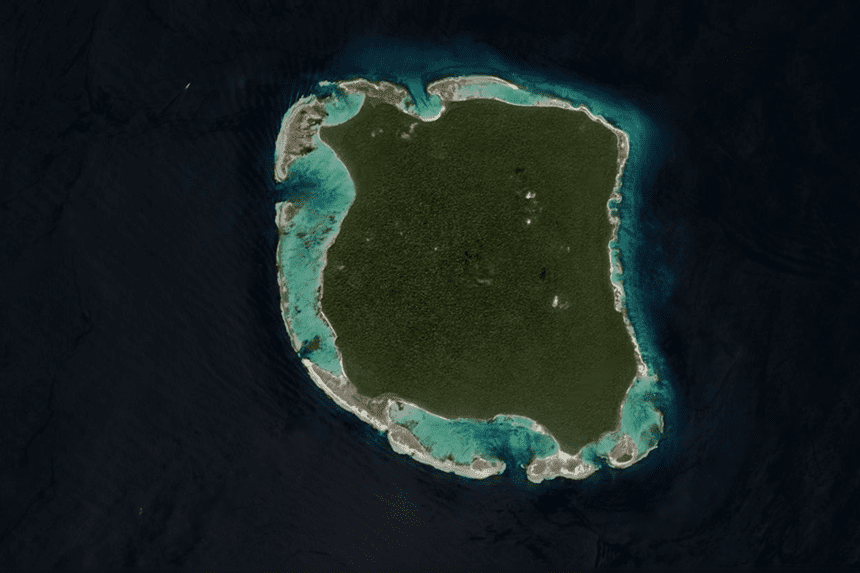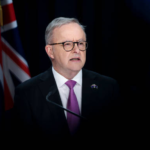Allegedly trying to contact the secluded Sentinelese people on North Sentinel Island, in the Indian Ocean, 24-year-old American visitor Mykhailo Viktorowicz Polyakov was arrested. According to Polyakov’s alleged filming, he set a Coke can and a coconut on the coast and used a whistle to draw in the tribe. His activities went against Indian rules forbidding any interaction with the Sentinelese tribe, who have spent decades in seclusion.
- The Chronicle of the Sentinelese Tribe: Isolation and Protection
- Why Is Sentinelese Contact So Risky?
- In this context, what hazards does social media present?
- About the Sentinelese Tribe, what is known?
- Has something like this happened before?
- Why is the Protection of Uncontacted Tribes Crucially Important?
With more people looking to acquire followers by visiting isolated, uncontacted villages, the emergence of social media influencers has created a fresh element of danger for such tribes. Polyakov’s effort to interact with the Sentinelese draws attention to the risks these influencers create for the tribe and themselves. Given their lack of experience with the outside world, the scenario is especially concerning since it could have disastrous effects on the tribe from disease susceptibility.
The Chronicle of the Sentinelese Tribe: Isolation and Protection
Considered among the most remote indigenous people worldwide are the Sentinelese. With extremely little interaction with the outside world, they have lived on North Sentinel Island for thousands of years. The Indian government has put tight rules in place to guard them as their intense need to stay isolated calls for protection. Polyakov’s actions are particularly unsettling as outsiders or Indians cannot get within five kilometers (3 miles) of the island.
For those wishing to interact with one of the last surviving uncontacted tribes on Earth, the island continues to be a source of attraction, notwithstanding these protective policies. Curiosity about how such societies exist and live without contemporary technology drives most of the reasons behind this obsession. But for the tribes, especially with social media’s arrival, this curiosity can have dire results.
Why Is Sentinelese Contact So Risky?
Advocates of indigenous people’s rights, Survival International, denounced Polyakov’s acts and labeled them “deeply disturbing.” The group underlined that such interaction not only compromises the tribe’s safety but also puts the visitor in danger. Over the years, the Sentinelese have made it quite evident that they want to avoid strangers; thus, these visits risk exposing them to harmful infections to which they lack immunity.
For the Sentinelese, interaction with the outer world carries great danger. Since they have never been exposed to diseases typical of modern society, any outside infection could have terrible results. An Indian fisherman and his associates unlawfully entered the island in 2006, and one of them perished from sickness stemming from their exposure. This reminds us sharply of the frailty of these remote populations, which have evolved immunity to their surroundings yet are susceptible to outside diseases.
Furthermore, the existence of social media influencers can just increase these dangers. Many of these celebrities act carelessly in their quest for popularity and following. Documenting visits with uncontacted tribes using social media gives the issue fresh relevance. Though in actuality, Polyakov is endangering the health and safety of entire populations, people like him could see their acts as benign or even adventurous.
In this context, what hazards does social media present?
This event has raised questions over the growing impact of social media celebrities in compromising uremotetribes. Described as a “thrill seeker,” Polyakov has been connected to a YouTube account with footage from his most recent travels—including a trip to Afghanistan. In an attempt to attract followers and attention, social media influencers are looking for such isolated tribes more and more, cautions Survival International. Frequently presenting their visits as an unusual or dangerous experience, they highlight themselves and their material without really thinking through the repercussions of their activities.
While traditional hazards like logging and mining in the Amazon region continue to damage uncontacted people, Jonathan Mazower, a Survival International spokesman, noted that the rise of social media influencers presents a new and growing hazard. “This whole idea is becoming increasingly popular on social media,” he continued.
The safety of indigenous people is now seriously threatened by the growing fixation with recording remarkable events for social media clout. The need for likes, shares, and follows motivates people to pursue chances with terrible results. Many times, this results in the ruin of once unspoiled habitats and cultures spanning millennia.
The desire to interact with uncontacted tribes is stoked more by the more material about them is shared. This starts a vicious loop as others try to imitate influencers, therefore compromising the tribe even more. Whether purposefully or not, social media influencers directly disturb the way these people live by generating a worldwide obsession with their solitude.
About the Sentinelese Tribe, what is known?
Living on an island roughly the size of Manhattan, the Sentinelese are among the most remote indigenous people living anywhere. Though the actual count is yet unclear, the tribe is thought to have about 200 members. Small towns of hunter-gatherers, their seclusion seems to be the reason they are in great health. One of the few uncontacted tribes on Earth, their way of existence has stayed essentially unaltered for thousands of years.
Their want to stay undisturbed directly causes their isolation. When outsiders—such as government officials or researchers—have visited the island in the past, the tribe has reacted angrily, frequently launching arrows at those who venture too near. These responses amply show that the Sentinelese want their alone time. Still, there is an increasing number of people trying to get in touch with them, mostly motivated by the appeal of catching a “unforgettable” encounter on camera for social media.
Governments should keep enforcing protections for these people as their limited interaction with the outside world calls for it. India has created a program emphasizing tribal welfare, while the United Nations has established explicit responsibilities for nations to safeguard the rights of indigenous and tribal peoples. The nation has lately come under fire, though, for not stopping some tribes from being forced from their territory.
Has something like this happened before?
An outsider has made attempts to interact with the Sentinelese before now. John Allen Chau, another American national, was slain by the tribe in November 2018 when attempting to visit the island. Chau, a Christian missionary 27 years old, was landed and shot with arrows. Later on, Chau allegedly bought a local fisherman to get him to the island in contravention of the government’s tight rules. His sad passing underlined the risks involved in trying to get in touch with the tribe for the indigenous people as well as for the outsiders.
Like Polyakov’s detention, Chau’s death highlights the dangers of interacting with the Sentinelese. Although some may see these meetings as chances to “bring the message” to the tribe, the truth is that these interactions only compromise the lives of both sides. Sadly, these events draw attention to the ignorance of people about the implications of contact and the rights of indigenous people to be left free from disturbance.
Why is the Protection of Uncontacted Tribes Crucially Important?
The need for government protection for these vulnerable groups is highlighted by the growing number of people looking to interact with isolated communities for personal benefit. Like all uncontacted tribes, the Sentinelese are entitled to live in peace and safety, free from outside threat or disease. Governments have to be alert in preserving their way of life and make sure the laws defending their isolation are rigorously followed. Society as a whole has to acknowledge the threat social media influencers create to the existence and well-being of these tribes. With its obsession for the unusual and the unfamiliar, the modern society can have terrible effects on societies that are quite happy as they have been for millennia. For outsiders, these tribes are living entities with rights to privacy and safety; they are not entertainment.
Finally, the situation of Mykhailo Viktorowicz Polyakov reminds us soberly of the possible risks social media influencers create and the necessity of more forceful policies to guard uncontacted indigenous communities against damage and exploitation. Should governments, businesses, and people neglect the required actions to guarantee these rights, the effects can be permanent.








